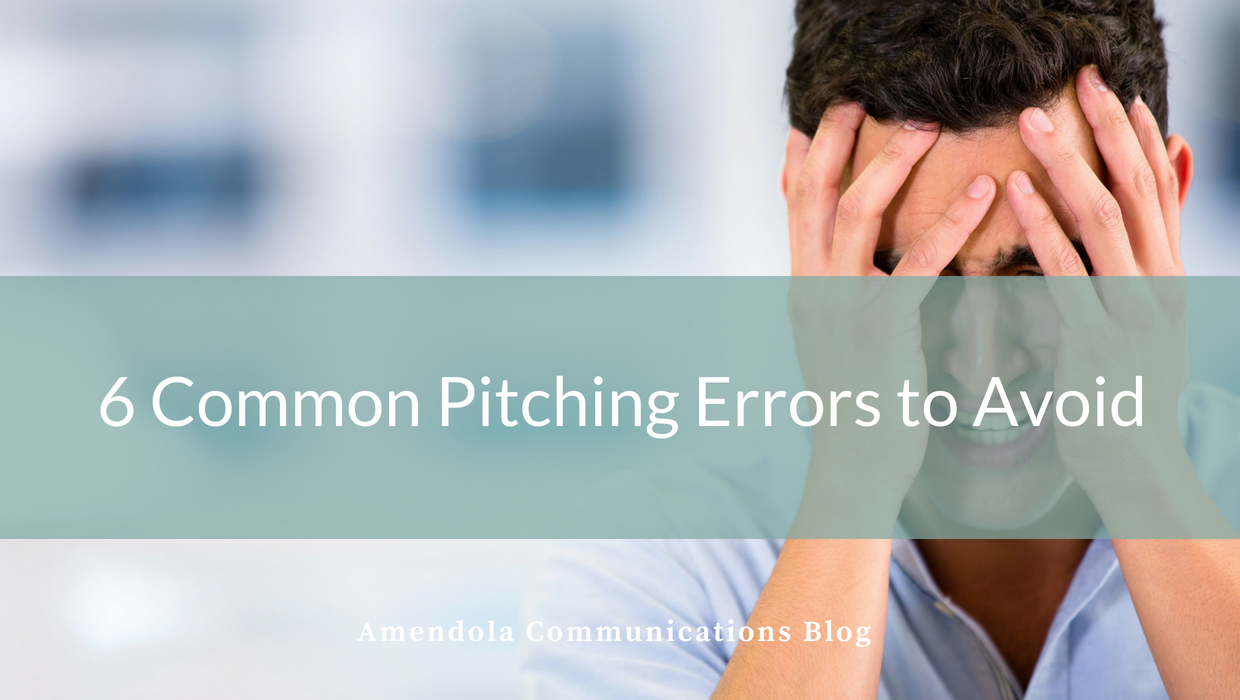Pitching stories is one of the essential skills of a PR professional. Yet it is surprising how many PR people neglect the basics of how to pitch what to whom. In most cases, a little thought and preparation can help PR pros avoid these kinds of mistakes. Yet they continue to be made on a regular basis, as any working journalist or editor can attest. Here are some common pitching errors and how to prevent them.
- Doesn’t know the publication. When a busy editor gets a pitch from a PR person who doesn’t know his or her publication, it’s an immediate turnoff. The pitch might be for a consumer story when it’s a business or trade publication, or the story might concern a sector of the industry other than the one that the magazine or website covers. In either case, the editor is unlikely to consider the pitch and will probably delete future emails from that publicist. To prevent this error, all you have to do is read sample articles in the publication or just glance at its home page.
- Doesn’t know the publication’s editorial policies. Even among trade publications, there is a wide range of different policies on how guest columns and news stories should be written. Some publications will not allow any mention of a client’s name or products. Others actively solicit promotional pieces (usually in exchange for ads), and there are variations in between those poles. The publications that take a strict stance against product promotion are more desirable for thought leadership, but some clients may want placement in publications that allow a mention of how their products helped their customers. The important thing is to know a publication’s editorial policies before pitching its editors. Usually, those policies are on its website. A PR firm should also ensure its writers follow these rules; if not, the publication may reject the piece.
- Doesn’t understand the publication’s slant. Depending on its audience, a publication might be looking for very specific kinds of stories and opinion pieces that cater to its readers interests. For example, a publication for CISOs will be receptive to pieces that focus narrowly on security but not on topics of general interest to CIOs, even though CIOs are also concerned about security. The editor will also look for trendy topics in that field, such as blockchain’s potential use in security. But if the publication has covered something frequently in the recent past, such as how to foil ransomware attacks, it may not be interested in that. To prepare for this possibility, do a keyword search in the publication’s archives or on Google.
- Doesn’t keep up with changes in direction. Some publications change their editorial direction, either because of a change in leadership or in response to market forces. Publicists should not assume that because a publication accepted certain kinds of pitches in the past, they will in the future. Keep up with what’s happening with key publications by reading them regularly, and also take note of personnel changes. When a new editor or journalist joins the publication, introduce yourself and ask what kinds of stories that person is looking for.
- Doesn’t pitch stories in a timely way. In the competitive field of journalism, timing is extremely important. If you pitch a news-related story too late, it will be rejected because no one is interested in that topic anymore. If a client has an important news story, it’s always a good idea to give key editors the news just ahead of its release on an embargoed basis. But don’t provide the release to just one editor, or the others will feel slighted and will remember that the next time you pitch them.
- Fails to present the pitch concisely and intelligibly. Any PR professional should know how to write a good pitch, but it is surprising how many emailed pitches fail that test. In some cases, they go on interminably before getting to the point. Other pitches are so poorly written that they’re difficult to understand. You should always remember that editors time is limited and that they may have to read hundreds of emails each day. Just as in a published article, a catchy headline and a cogent lead will go a long way toward getting an editor’s or journalist’s attention.
None of these mistakes are difficult to correct. With a fairly minimal effort, publicists can learn what publications want and how to deliver it. By doing so, they can vastly increase their chances of having their pitches accepted and of placing articles in sought-after publications.
